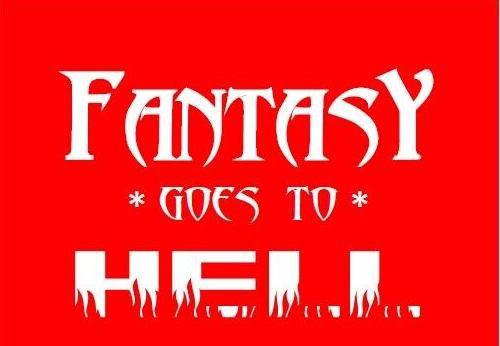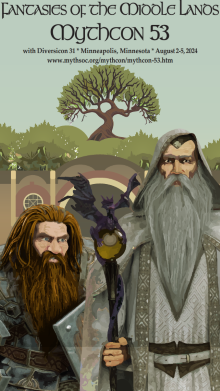Loading...
Event Website
https://www.mythsoc.org/oms/oms-2023.htm
Start Date
8-6-2023 5:30 PM
End Date
8-6-2023 6:20 PM
Description
J.R.R. Tolkien’s Legendarium is rich with magical and mythological elements—enchanted rings, powerful wizards, stories told long ago—and near-Biblical struggles of good over evil, power over life and death, and the inexorable passage of time. The Halls of Mandos in Valinor even have echoes of the “afterlife,” serving as a liminal place for the spirits of Elves to await their next destination. Interestingly, though, a “hell” in the classic sense (that is, a spiritual region of eternal torment and suffering) does not seem to truly exist in Tolkien’s imagined worlds. However, Tolkien does fill those worlds with hellish landscapes: Utumno and Angbad in the Iron Mountains; Thangorodrim, Mount Doom, and Mordor; the Door of Night leading into the Timeless Void. These places reflect absence, abuse, neglect, and environmental exploitation. Why might Tolkien, a writer who has so carefully crafted the mythology, history, and geography of the Legendarium, avoid “Hell”? What do the hellish landscapes offer readers instead? And how might consideration of these physical spaces challenge or confirm our modern understanding of what hell on (Middle-)earth might be? By examining how Tolkien describes these landscapes and the effects of villainous figures like Morgoth on such places, we can begin to understand Tolkien’s fantastic vision of hell.
Creative Commons License

This work is licensed under a Creative Commons Attribution-NonCommercial-No Derivative Works 4.0 International License.
Included in
Children's and Young Adult Literature Commons, Comparative Literature Commons, Digital Humanities Commons, European Languages and Societies Commons, Literature in English, Anglophone outside British Isles and North America Commons, Literature in English, British Isles Commons, Literature in English, North America, Ethnic and Cultural Minority Commons, Medieval Studies Commons, Modern Languages Commons, Modern Literature Commons, Other English Language and Literature Commons
Hellish Landscapes in J.R.R. Tolkien’s Legendarium
J.R.R. Tolkien’s Legendarium is rich with magical and mythological elements—enchanted rings, powerful wizards, stories told long ago—and near-Biblical struggles of good over evil, power over life and death, and the inexorable passage of time. The Halls of Mandos in Valinor even have echoes of the “afterlife,” serving as a liminal place for the spirits of Elves to await their next destination. Interestingly, though, a “hell” in the classic sense (that is, a spiritual region of eternal torment and suffering) does not seem to truly exist in Tolkien’s imagined worlds. However, Tolkien does fill those worlds with hellish landscapes: Utumno and Angbad in the Iron Mountains; Thangorodrim, Mount Doom, and Mordor; the Door of Night leading into the Timeless Void. These places reflect absence, abuse, neglect, and environmental exploitation. Why might Tolkien, a writer who has so carefully crafted the mythology, history, and geography of the Legendarium, avoid “Hell”? What do the hellish landscapes offer readers instead? And how might consideration of these physical spaces challenge or confirm our modern understanding of what hell on (Middle-)earth might be? By examining how Tolkien describes these landscapes and the effects of villainous figures like Morgoth on such places, we can begin to understand Tolkien’s fantastic vision of hell.



Comments
SESSION VI
5:30 PM—6:20 Eastern
4:30 PM—5:20 Central
3:30 PM—4:20 Mountain
2:30 PM—3:20 Pacific
9:30 PM—10:20 GMT